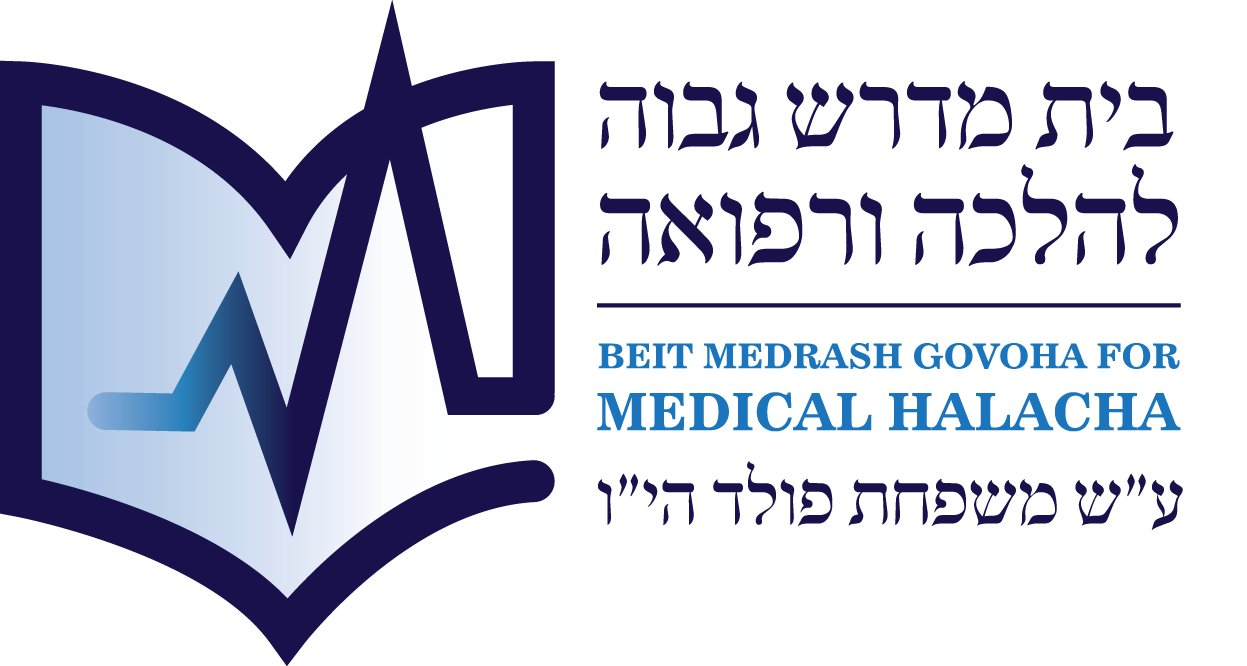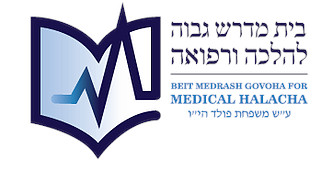Conducting human research and utilizing experimental drugs involve several aspects of Halacha, including Hilchos Shabbos and Pikuach Nefesh. Drug development invariably encompasses a phase of human trials, which is an essential step before the drug can receive approval for market use. Experimental drugs aimed at treating severe illnesses are frequently administered to patients who have exhausted conventional treatment options. For these individuals, this may represent their final opportunity for recovery.
Using experimental treatment involves considering its efficacy and associated risks. There are two primary concerns:
- Potential side effects or consequences that could worsen the patient’s condition or lead to death.
- The disease could progress during the time allocated to the experimental therapy, which might have been used to try or consider other potential treatments.
The Mishna states (Yoma 83a):
Someone who is seized by Bulmus (a life-threatening hunger) is fed even non-kosher food until his eyes regain clarity. Someone who was bitten by a mad dog may not be fed the lobe of that dog’s liver. R’ Masya ben Charash permits it.
Feeding a rabid dog’s liver to the victim of its bite is a Segula (mystical remedy), not a natural or proven medical treatment. The Halacha follows the Chachamim. The Rambam (Peirush haMishnayos, ibid.)explains:
The Halacha does not follow R’ Masya ben Charash, who permits feeding a person who was bitten by a mad dog from the lobe of its liver on Yom Kippur, because this is not effective other than by mystical means. The Chachamim say: one may only violate a commandment for medical treatment that is clearly effective – which reason and direct experience validate. But not for Segulos, as their effect is weak, not supported by logic, and their success is unproven. It is merely an unverified claim. This is a significant principle, take heed!
The Rambam states that just as a mystical remedy cannot override Torah prohibitions, the same is true of any act of Refua that is not well-tested, logical in its healing mechanism, and clearly effective. In his comment on this Mishna, Rashi does not describe this as a Segula but as an unproven treatment that does not justify the violation of the prohibition of Beheima Temai’a, even though it was an accepted medical practice at that time.
Some argue that according to the Rambam, only Segulos are forbidden, not experimental treatments. It seems likely that the Rambam’s statement applies equally to experimental treatments. A Segula is never considered a reliable treatment because its mechanism is unknown and has not been evaluated sufficiently. The same reasoning applies to experimental treatments, as they lack the criteria for valid medical treatment.
Why can we not utilize unproven or experimental treatments based on the rule that even “Safeik Pikuach Nefesh” overrides the laws of the Torah? Rubble from a collapsed building can be removed on Shabbos, even if it is uncertain whether people are there or alive. Why do we not similarly permit experimental treatments despite the uncertainty of their efficacy?
The distinction is obvious: The Torah permits lifesaving acts (such as removing rubble or proven medical treatment) on Shabbos even when it is doubtful that they will save lives in a given actual situation. However, the Torah did not permit acts that may not be legitimate forms of lifesaving at all, even if a person is in clear mortal danger.
In practice, however, this is not so simple. The Magen Avraham (O.C. 328:2) rules that one may only desecrate Shabbos to treat a person who is dangerously ill using a “Refua Yedua” (a recognized treatment) or “Al Pi Mumche” – a treatment recommended by an expert physician. This means that one may not desecrate Shabbos to use unknown therapies unless recommended by an expert, in which case one may assume they are tried and tested.
The source of his ruling is the Rema (Y.D. 155:3) in the name of the Isur v’Heter (59). Biur haGra (ibid. 23) explains that the source of the Isur v’Heter is the aforementioned Mishna in Yoma, in which the Chachamim forbade a person who was bitten by a rabid dog from eating the dog’s liver.
The Chochmas Adam (88:7) adds that the same conclusion may be drawn from another Gemara in Maseches Yoma (49a). When R’ Yehoshua ben Levi was dangerously ill, he refrained from dicing “Shachalayim” (a particular vegetable, possibly cress) on Shabbos because he was unsure whether it was a cure for his illness. Only once he consulted with R’ Chanina (who was an expert in matters of Refua) did he do it.
Why didn’t R’ Yehoshua ben Levi dice the Shachalayim on the chance it would cure him? After all, it was a situation of Pikuach Nefesh. We see that one may not violate the laws of the Torah unless one is certain that one is using a bona fide form of treatment.
The Pri Megadim (ibid. Aishel Avraham 1) disagrees with the Magen Avraham. He maintains that in a case of Pikuach Nefesh, one is permitted to make use of any form of Refua – even if it is untested – as one may override the rules of the Torah even for “Safeik Pikuach Nefesh”. He maintains that the Rema required a “Refua Yedua” in the case of an ordinary sick person, not in a case of Pikuach Nefesh. (Many Acharonim disagree with the Pri Megadim because the source of the Rema’s ruling, as mentioned previously, as the Isur v’Heter was discussing a case of definite Pikuach Nefesh.)
The Pri Megadim asserts that “Safeik Pikuach Nefesh” overrides the laws of the Torah. The Acharonim concede that a treatment must not be definitively proven effective for the specific disease to override Torah prohibitions. However, it must be relevant to the illness and shown to have worked in similar cases, even if it is not sure to be effective. Nonetheless, treatments based purely on hearsay and rumors do not justify the violation of prohibitions (whether d’Rabbanan or d’Oraisa). The same principle is implied by the Shulchan Aruch haRav (O.C. 328): “Even for one who is in certain Sakana we only desecrate Shabbos to treat him with a Refua Yedua or at the word of an expert. If it is a Refua Yedua, but it is unknown if it will work for him, we desecrate Shabbos out of doubt.”[1]
Terminally ill patients are often offered experimental treatments. If these treatments require Chilul Shabbos or other prohibitions, are they permitted? Many Poskim do not allow violating Torah laws for unproven therapies. However, most experimental treatments have undergone substantial research and testing, potentially classifying them as “Refua Yedua”. Of course, each case must be judged individually; one must consult with a qualified Halachic authority for specific guidance.
While the above principles address violating Shabbos or other Mitzvos in the context of medical treatment, they do not address the issue of the risk involved in such treatments. In Minchas Shlomo (2:82), R’ Shlomo Zalman Auerbach zt”l offers some remarkable and profound insights on this question:
Even in a Milchemes Reshus, which is only for expanding territory, the king may not send the people to war except with the approval of the Sanhedrin of seventy-one. However, regarding Milchemes Mitzva; even though with regard to fighting Amalek or the seven Canaanite nations it is clear that it [the notion of Milchemes Mitzva] is only relevant when we have a king, still, when bears or lions attack the community and we must fight them off and drive them away, perhaps – aside from the fact that this is considered saving lives and thus every individual must desecrate Shabbos to save lives – it is also considered a [form of] Milchemes Mitzva. Even though we have no king or Sanhedrin today, perhaps the community leaders (the Tovei Ha’ir) may compel people to risk their lives just as in war, even in situations where an individual would not have been Halachically obligated to act to save lives.
If this is correct, perhaps the war against diseases threatening human life is also a form of Milchemes Mitzva. And if we were fortunate enough that all matters were conducted according to Torah, perhaps Beis Din would view the necessity of testing medications as a Milchemes Mitzva to save lives. Therefore, even though in our times these matters are not conducted under Torah authority, since they are done by great experts with extreme care, it seems there is no prohibition in volunteering for this.
Testing medications qualifies as a case where a sick person is before us, and it is not comparable to general autopsies done to increase medical knowledge. Here, the illnesses and patients already exist in the world, and the potential medication also exists, so it is considered a direct act of potential life-saving, not merely for research and knowledge. Additionally, some women willingly enter the possible danger of pregnancy solely due to their strong desire to have a child, and no one objects, even though Halachically they may avoid the pregnancy.
In any case, if a person has a serious illness for which his doctor believes conventional treatment is unlikely to succeed, this (the experimental treatment) is similar to surgery. Even though there is a risk that the patient might die immediately during surgery, it is nevertheless permissible. Likewise, in this case, the patient is indeed permitted to use an uncertain (experimental) treatment.
There are two Chiddushim in R’ Shlomo Zalman’s Teshuva:
- Developing medications is considered a Milchemes Mitzva. Therefore, a person may risk his life for this cause – just as he may endanger himself in wartime.
- In situations with no treatment options, a person may choose an experimental therapy even if it entails risk.
While the second point aligns with the views of many Poskim, the first point is a great Chidush and is not stated by other Poskim.
In an as-yet-unpublished Teshuva, haGaon Rav Asher Weiss Shlit”a expresses reservations about this Chidush. There is neither a Mitzva, nor even a Heter, to endanger oneself for the research or development of experimental medications. This alone does not constitute a valid reason to permit taking such risks. Additionally, he notes that dangerous medications are never approved for human clinical trials.
[1] See also Shevet haLevi (3:36 & 5:55) who has a similar approach, as well as other Acharonim.













Add comment